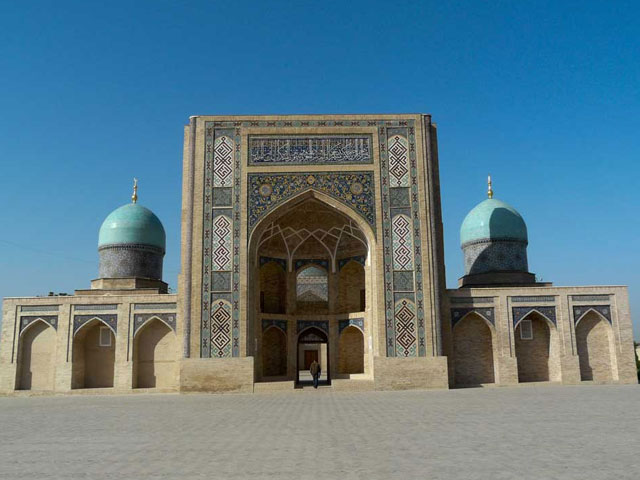Near the Hasti Imom square, one of the amazing monuments of medieval architecture, Barak-khan madrasah is situated.
First of those was the “Nameless” mausoleum in the eastern part of the modem complex. The latter one is a double-domed mausoleum-khanaka built in 1530 in commemoration of Tashkent ruler, Suyundj-khan Sheybani (the first Tashkent ruler from Uzbek dynasty of Sheybanids). It was gorgeously decorated with traditional ornaments and gilding, but with time this building has gone through several redesign processes. In the middle of the 16th century, the son of Suyundj-khan, Nauruz-Ahmad who was called Barak-khan had built an additional madrasah adjoining the mausoleum of his father. However, the mausoleum stayed the central element of the entire complex. Its main hall as well as the nameless mausoleum and darskhana are vaulted with turquoise domes standing on tall drums.
The decor in Barak-khan madrasah had been applied only to the main objects, main entrance, portal and the Suyundj-khan mausoleum’s
The vault of the Barak-khan madrasah portal was constructed in the shape of a niche - kolab-kori, tympanums and the abutments are bedecked with carved bricks and the mosaic. The name of the architect who recreated kolab-kori inl955—1963 is Usta Shirin Muradov.
Within few decades, Spiritual seminary of Uzbek Muslims had been located in the Barak-khan madrasah; nowadays it occupies the territory of a new, specially-built construction and the premises of the madrasah were given up for housing craft-rooms.























